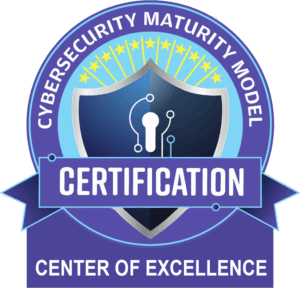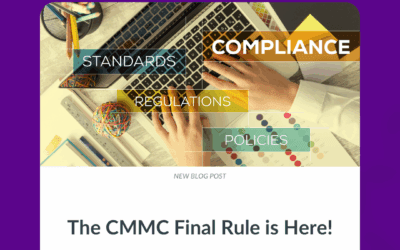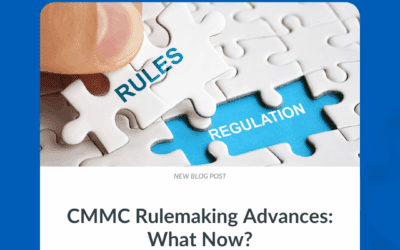In today’s digital age, cybersecurity has become a vital concern for all businesses. Compliance with relevant regulations is no longer an option but a necessity. Federal Acquisition Regulation (FAR) 52.204-21, known as the Basic Safeguarding of Covered Contractor Information Systems, is one such regulation that’s critical for all government contractors. But what exactly is this regulation, and why is its compliance so important? We’ll go over everything you need to know to get compliant successfully.
Understanding the requirements of FAR 52.204-21
To navigate the path to compliance, you need a robust understanding of the specific requirements that FAR 52.204-21 mandates. This federal regulation is divided into three significant subparts – General Regulations, Technical Requirements, and Reporting Requirements. Each carries its own set of protocols that together form a comprehensive guideline for securing information systems.
Subpart A: General Regulations
The General Regulations constitute the bedrock of FAR 52.204-21, laying down the baseline requirements for government contractors. They focus on the following:
- System Security: It is paramount that a secure environment is created where information systems are immune to unauthorized access, alteration, disclosure, or destruction. An effective security management system must be in place to manage security risks.
- Safeguarding Information: Any information related to the federal contract should be treated as sensitive and needs to be guarded. This includes non-public information provided by the government or data generated during the execution of a government contract.
- Limited Access: To prevent unwarranted breaches, access to this information should be stringently controlled. Only authorized personnel should have access, and even then, their access should be limited to a “need-to-know” basis.
Subpart B: Technical Requirements
The Technical Requirements form the heart of FAR 52.204-21. These are the technical benchmarks that government contractors’ information systems must meet. They include:
- Firewalls: Contractors must maintain effective firewalls that act as the first line of defense against cyber attacks. Firewalls should be regularly updated to counter new threats and should be configured accurately to prevent breaches.
- Data Encryption: Any federal contract information transmitted or stored must be encrypted. This makes the information unreadable and unusable to anyone without the encryption key.
- Security Updates and Patches: Cybersecurity is not a static field, and new threats are continually emerging. Hence, contractors must keep their systems updated with the latest security patches and updates. This includes updating operating systems, applications, and firmware on all devices.
Subpart C: Reporting Requirements
The Reporting Requirements under FAR 52.204-21 make it incumbent upon contractors to take responsibility for the security of their systems. Key requirements include:
- Security Audits: Regular audits need to be performed to assess the efficiency of security controls, identify vulnerabilities, and ensure compliance with FAR 52.204-21. Audit logs should be maintained and reviewed regularly.
- Reporting Breaches and Vulnerabilities: Any detected breach or vulnerability in the system must be reported promptly to the Contracting Officer or other designated representatives. This allows for timely mitigation and reduces the potential impact of a breach.
FAR 52.204-21 security controls
FAR 52.204-21 outlines a set of 15 security controls that are foundational for safeguarding any contractor information system that processes, stores, or transmits Federal Contract Information (FCI). These controls address various aspects of cybersecurity and provide a baseline level of protection for contractor information systems. Here’s an overview of each control:
1. Limit Information System Access to Authorized Users: This control involves setting up protocols and systems that ensure only authorized personnel can access the system. This might involve using access control lists, role-based access controls, and password protection. It’s about ensuring that every person who accesses the system has been explicitly granted permission to do so.
2. Limit Information System Access to the Types of Transactions and Functions That Authorized Users are Permitted to Execute: This control extends the principle of ‘least privilege’, meaning that even authorized users should only have access to the information and system functions necessary for their specific roles. For example, a human resources employee may not need access to financial systems.
3. Verify and Control/Manage Access to the System: The contractor needs to ensure all system users are verified before they gain access. This typically involves user authentication protocols like passwords, smart cards, biometrics, or multi-factor authentication. It also includes the management and monitoring of user accounts and access privileges.
4. Control Information Posted or Processed on Publicly Accessible Information Systems: This control means that contractors should be careful about what information is posted in public domains. Any information related to the federal contract must remain confidential and not be disclosed on publicly accessible systems.
5. Identify Information System Users and Process Acting on Behalf of Users: Every action on the system should be traceable to an individual user. This includes actions taken by software processes acting on behalf of users. User and activity logs are typically used to meet this control.
6. Authenticate or Verify the Identities of Users, Processes, or Devices: This is about ensuring that a person, process, or device is who or what it claims to be. Verification might involve validating usernames and passwords, checking digital certificates, or confirming the device ID.
7. Sanitize or Destroy Information System Media Containing Federal Contract Information Before Disposal or Release for Reuse: When disposing of or reusing media (like hard drives or USBs) that contain federal contract information, the contractor must ensure that data is securely erased or destroyed. This can involve degaussing, physical destruction, or secure erasure methods.
8. Limit Physical Access to Information Systems, Equipment, and Operating Environments to Authorized Individuals: Physical security measures should be in place to prevent unauthorized access to systems, servers, and other hardware where federal contract information is stored or processed.
9. Escort Visitors and Monitor Visitor Activity, Maintain Audit Logs of Physical Access, and Control and Manage Physical Access Devices: Visitors should be escorted in areas where sensitive information is processed, and their activities monitored. Logs of physical access should be maintained, and physical access devices (like keys or access cards) must be controlled and managed.
10. Monitor, Control, and Protect Organizational Communications at the External Boundaries and Key Internal Boundaries of Information Systems: Security measures like firewalls, intrusion detection systems, and secure gateways should be used to protect the system’s boundaries and control data flow.
11. Implement Subnetworks for Publicly Accessible System Components That are Physically or Logically Separated from Internal Networks: Network segmentation, or dividing a network into smaller parts, can limit the spread of a breach and provide additional layers of control and protection.
12. Identify, Report, and Correct Information and Information System Flaws in a Timely Manner: Regularly scanning for and patching system vulnerabilities is critical for maintaining system security. Flaws should be reported and corrected promptly.
13. Provide Protection from Malicious Code: Systems should have protective measures like antivirus software and malware scanners to detect, quarantine, and remove any malicious code.
14. Update Malicious Code Protection Mechanisms When New Releases are Available: Just as threats evolve, so should defenses. Contractors must ensure their protective software is regularly updated to counter new types of malicious code.
15. Perform Periodic Scans of the Information System and Real-Time Scans of Files from External Sources as Files are Downloaded, Opened, or Executed: Regular vulnerability scans should be conducted to identify potential system weaknesses. Files coming into the system should be scanned in real time for threats. This helps to identify and neutralize potential risks before they cause harm.
The relationship between FAR 52.204-21 and the cybersecurity maturity model certification
The Federal Acquisition Regulation (FAR) 52.204-21 and the Cybersecurity Maturity Model Certification (CMMC) are two separate, but related, regulations that focus on enhancing cybersecurity within the U.S. Department of Defense (DoD) supply chain.
FAR 52.204-21: The Basics
As we’ve discussed earlier, FAR 52.204-21 is a clause that sets a minimum standard of 15 basic security controls for safeguarding Federal Contract Information (FCI). This regulation applies to all government contractors, regardless of what kind of contract they are working on or what type of information they are handling, as long as the information is not intended for public release.
CMMC: The Basics
CMMC, on the other hand, is a certification process that mainly measures a company’s ability to protect Controlled Unclassified Information (CUI), which is a step up in sensitivity from FCI. CMMC includes multiple levels of certification, ranging from Level 1 (Foundational) to Level 3 (Expert). Level 1 – Foundational corresponds to the 15 controls of FAR 52.204-21.
In essence, FAR 52.204-21 can be seen as a step towards achieving CMMC Level 1 compliance. CMMC, however, covers a broader range of security controls and processes, with higher levels requiring more advanced practices, processes, and documentation. It’s crucial for contractors to understand that compliance with FAR 52.204-21 does not automatically mean they meet all CMMC requirements.
The consequences of non-compliance with FAR 52.204-21
Failure to adhere to FAR 52.204-21 can result in severe consequences, affecting various aspects of a business. Let’s delve deeper into these potential ramifications:
Legal consequences
Not complying with FAR 52.204-21 exposes contractors to potential legal ramifications. The US government takes the protection of Federal Contract Information (FCI) very seriously, and contractors found to be in violation of these standards may face substantial fines. Additionally, legal action might lead to costly court proceedings and penalties. In some extreme cases, individuals involved in non-compliance may face personal liability or criminal charges, especially in cases involving gross negligence or intentional misconduct. Therefore, it’s vital that businesses take the necessary steps to understand and meet these requirements.
Reputational risks
In today’s interconnected world, news travels fast. A single incident of non-compliance, especially one that leads to a data breach, can cause significant damage to a company’s reputation. Clients, partners, and stakeholders may lose trust in a company that fails to comply with important regulatory requirements like FAR 52.204-21. This loss of trust can lead to a decline in business, as customers may choose to take their business to companies that prioritize and demonstrate commitment to data security. Additionally, it may become more challenging to form new partnerships or attract quality talent due to a tarnished reputation.
Business impacts
The immediate and long-term business impacts of non-compliance can be profound. Contractors found to be in violation of FAR 52.204-21 may face contract termination, which can result in a significant loss of revenue. In severe cases, non-compliant contractors could also be barred from bidding on future government contracts, severely limiting their business prospects. Additionally, the cost of rectifying compliance issues, coupled with any incurred legal penalties, can place a substantial financial burden on a company.
Getting help with FAR 52.204-21 compliance
We highly recommend leveraging an experienced cybersecurity consultant to help you navigate the intricacies of FAR 52.204-21 compliance. A CMMC Registered Provider Organization (RPO) can play an instrumental role in helping defense contractors achieve compliance. Here’s how Ardalyst helps customers reach compliance comprehensively:
Providing expertise and guidance
Ardalyst cybersecurity experts work with you to understand your business and your current practices to provide comprehensive guidance and strategies for implementing the necessary security controls and fulfilling the regulations’ requirements.
Risk assessment & gap analysis
By performing our FREE business risk assessment, we can quickly and effectively identify where your current security posture falls short of FAR 52.204-21 and CMMC requirements. This analysis helps pinpoint areas that need improvement and lets us create a clear, actionable roadmap toward compliance.
Developing and implementing a security plan
After understanding the gaps in your system, we work with you to develop and implement a robust security plan. This plan will include measures to meet each security control of FAR 52.204-21 and, if needed, further actions to comply with the relevant CMMC level.
Remediation & configuration
Our cybersecurity and technical experts can put your plan into action to set your program in place properly, configure your tools to the appropriate standards, and set your business up for success.
Documentation assistance
Maintaining appropriate documentation is crucial for demonstrating compliance. Ardalyst experts work with you to execute proper documentation, including system security plans, incident response plans, and audit logs.
Get started!
Start your journey to compliance with a FREE trial of Tesseract, a comprehensive cybersecurity program designed to meet FARS, NIST, and CMMC requirements, which includes:
- A Free Risk Assessment that meets the requirements for RA.L2-3.11.1 and lays the foundation for your program
- A Preview of your System Security Plan (SSP) & Plan of Actions and Milestones (POAM)
- An overview of the Tesseract Managed Cybersecurity Program and your path to getting & staying compliant
- A technical design of your Tesseract program enclave
- Exclusive deals on additional tools like Microsoft GCC & GCC-High
Frequently asked FAR 52.204-21 questions
Who needs to comply with FAR 52.204-21?
All government contractors who manage, process, or store federal contract information in their information systems are required to comply with FAR 52.204-21.
Can FAR 52.204-21 requirements change over time?
Yes, like all regulations, FAR 52.204-21 can be updated over time. Contractors need to stay abreast of any changes to ensure ongoing compliance.
How does FAR 52.204-21 relate to other cybersecurity regulations?
FAR 52.204-21 provides a baseline of cybersecurity measures. Other regulations might have additional requirements depending on the nature and sensitivity of the data handled by the contractor.
How can I stay up-to-date with changes in FAR 52.204-21?
Staying in touch with relevant government departments, attending industry seminars and webinars, and consulting with a legal advisor specializing in government contracts can help you stay updated. Sign up for the latest news from Tesseract!
Does FAR 52.204-21 apply to subcontractors?
Yes, FAR 52.204-21 applies to both prime contractors and subcontractors.
Does compliance with FAR 52.204-21 guarantee complete cybersecurity?
While compliance with FAR 52.204-21 significantly enhances your cybersecurity, no single measure can guarantee complete security. A comprehensive approach involving continuous monitoring, updating, and employee training is crucial.
Is FAR 52.204-21 compliance a one-time task?
No, compliance is an ongoing task requiring regular audits, updates, training, and a proactive approach to cybersecurity.



